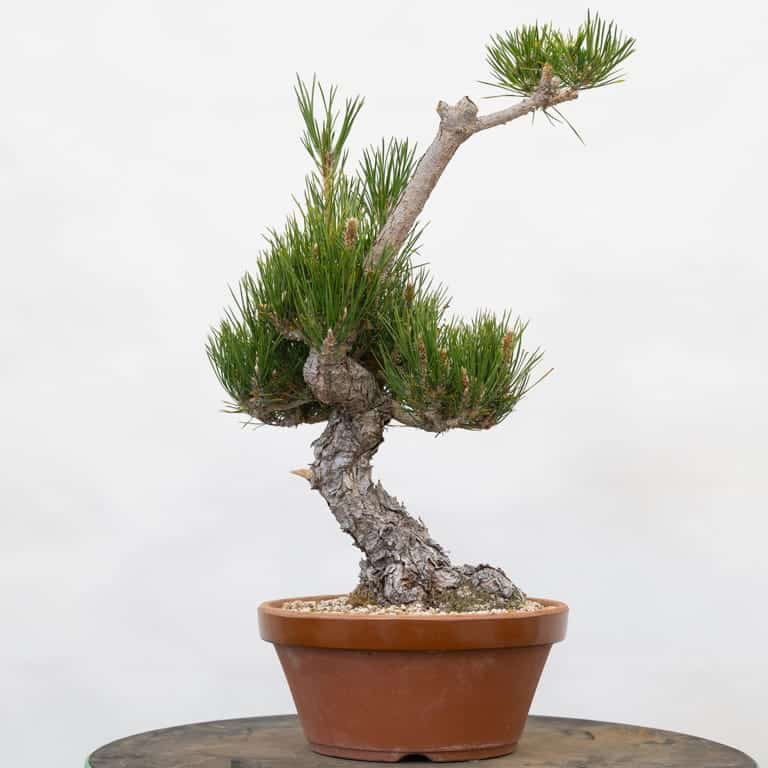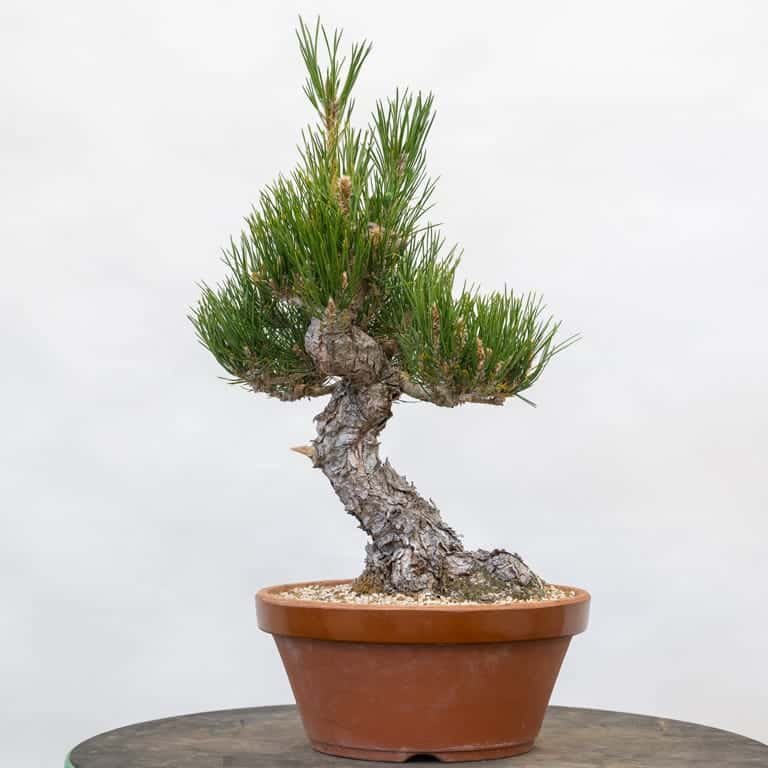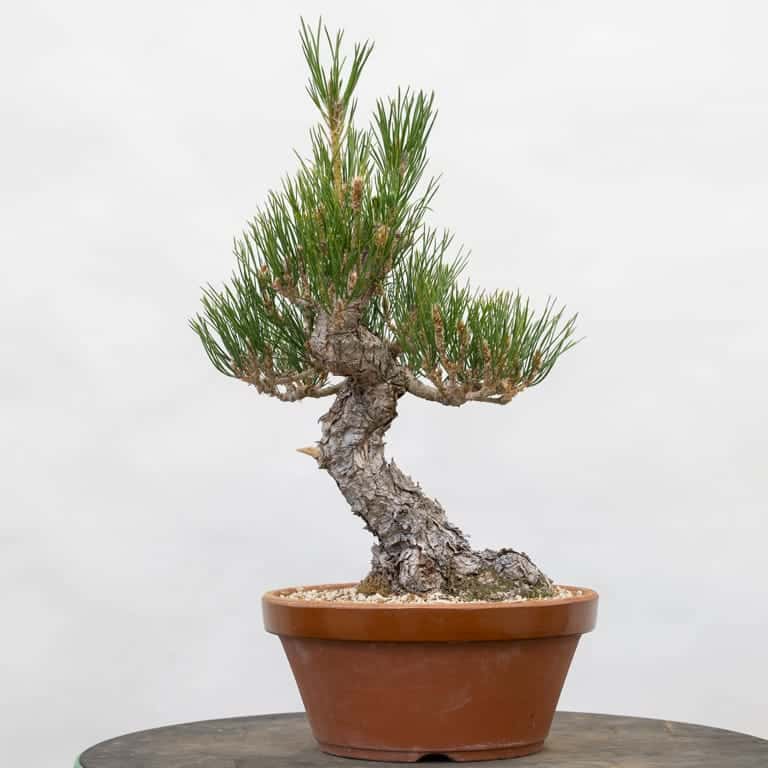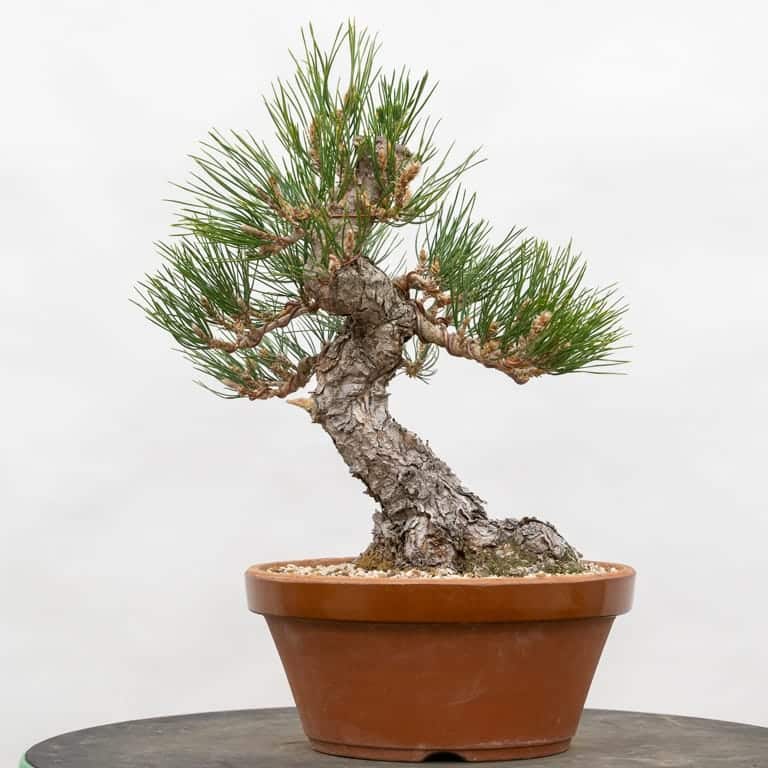One of my favorite things about working on trees I’ve had for a long time is that the work is straightforward.
My normal pattern is to spend the first few years of a tree’s time in my garden getting it healthy. Once the tree is healthy, I can spend the next few years doing any major work the tree might need. When the major work is complete I can focus on branch refinement.
As I grew the pine below from seed, I’ve had ample opportunity to set the structure and am now working on finishing the apex and increasing branch density.

Black pine – 15 years old from seed
The work at this time of year is simple: thin crowded branches, remove unnecessary needles, and wire branches that need adjusting.
Here’s the tree after removing a dozen small branches and reducing the sacrifice branch.

After cutback
The next step is to prepare the tree for wiring. I did this by removing most of the old needles and some of the new needles.

After thinning unnecessary needles
I wired the primary branches that grew from the trunk plus a few secondary branches. As you can see, the basic shape is roughly the same. The main difference is that the branches now reach out farther to the sides.

After wiring – 15″
Near the apex, I’ve preserved more branches than I need to maintain sap flow along the upper part of the trunk. When the future apex gets bigger in one or two years, I’ll reduce the trunk by cutting back to the new apex.
In the meantime, the refinement will continue.
Subscribe to Bonsai Tonight
New Posts Delivered Every Tuesday and Friday
Thomas Regelski says
Very instructive and nice work. Is apex the top of the tree? How did you determine the front, or do you think of it as two=sided?
Jonas Dupuich says
Good questions Thomas – “apex” is synonymous with the crown or top portion of the tree. There are a number of small branches along the upper part of the trunk and I have yet to decide which will become the main branch I use to develop the crown of the tree.
As for the front, I think the current front is the most viable alternative. Here are the basic criteria:
1. evaluate the trunk to find the most attractive view
2. evaluate the branches to find the view that provides fullness without obscuring the lower portion of the trunk
3. evaluate the surface roots to find the most attractive view
4. if the tree has special features like good bark or interesting deadwood, try to make if visible from the front
5. try to hide any flaws in the back of the tree
After evaluating the tree, try to select the most interesting or beautiful front in light of the above criteria.
Will try to make a post on the topic in the next couple months. I hope this helps!
Tony Berardi says
Is this time of year acceptable for removing a sacrifice branch? I have one that is about 3-4’ tall and creating balance issues. 9 year old JBP from seed.
Thank you!
Jonas Dupuich says
Good question Tony – now is a good time to cut if you leave a stub. You can remove the stub later. If you are worried about dieback, cutting during the growing season is best.
Ken Bross says
Hi Jonas,
Beautiful little tree. You said this tree is grown from seed. Did you grow it in the ground, a bucket, a colander? What is the growing pedigree, so to speak? Thank you.
Jonas Dupuich says
Thanks Ken! The tree was entirely container grown, primarily in colanders until one year ago. Will plant it in a bonsai container in the next year or two.